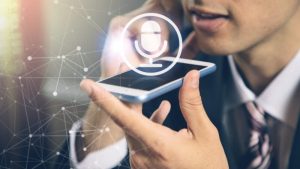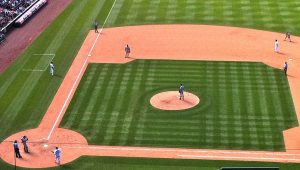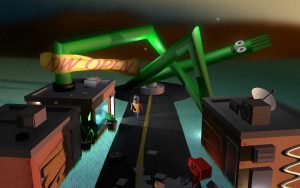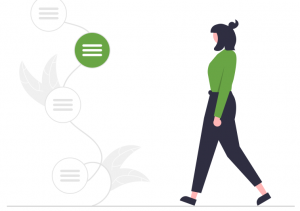The Idea Is To Subtly Influence Customers’ Purchase Decisions As They Proceed Down The Sales Funnel
Knowledge Commerce is a booming new line of ecommerce. You first discover, and then “productize” your own unique knowledge, talent, skills or passions – into ebooks, courses, memberships, webinars, virtual summits, consulting packages, and a host of other formats.
It’s an ideal business for solopreneurs. If you want to grow yourself into an exclusive and premium brand, and command market-dominating prices, this is your perfect opportunity. So get in early.
There is a lot of confusion about the “product sales funnel” in marketing. Some people call it a “purchase funnel”. Some others call it a “sales funnel”. Some refer to it as the “customer buying cycle”. What is it actually?
We like to call it a “sales funnel”. That name reminds us of what we are doing this for – achieving more sales.
Anyway, the definition of a sales funnel is this. People who buy products – any products – go through stages. They first explore a need. They examine possible solutions. They then buy products that provide these solutions. Can marketers can track customers through the in-between stages of this buying process? If we can, we can influence customers’ decisions with the right content marketing. Right?
Many people have many different ways to break up this funnel. Some marketers believe the sales funnel has only four or five stages. But we follow an eight-stage funnel. That gives us more accuracy in serving customers at their key decision points.
1. Why Understanding The Product Sales Funnel Is Important To Marketers
Think about this. You could be wasting your time and effort writing vague and purpose-less blog posts. Would it not be smarter to know what information people seek during buying decisions? Would it not be smarter to support them with the right content at the right stage to make decisions favoring you? That’s why it’s important to understand the many stages of the sales funnel. You can encourage the slow-moving customer to proceed faster down the funnel with the right information.
Here are three points to know first about the sales funnel…
a. What Is A Product Sales Funnel – And Why Is It In The Shape Of A Funnel?
Below is a diagram showing you the eight stages of a sales funnel.
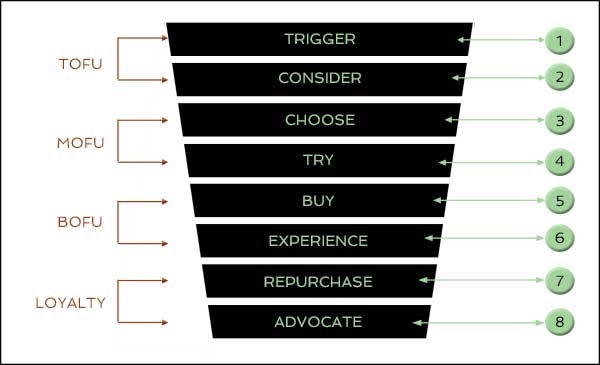
- The two top stages are clubbed together as Top Of The Funnel, or TOFU. This is where the customer is TRIGGERED by a pain-point to CONSIDER looking for solutions.
- The next two stages are clubbed together as Middle Of The Funnel or MOFU. Here the customer CHOOSES to TRY out some possible solutions he has come across.
- The next two stages are clubbed together as Bottom Of The Funnel or BOFU. This is where the customer decides to BUY a shortlisted product and EXPERIENCE your service.
- The last two stages are about retaining customer LOYALTY. They happen after purchase, when we have to cajole buyers to REPURCHASE more products, or ADVOCATE your products to others.
Wouldn’t it be wonderful if the purchase funnel didn’t have a narrow bottom end, but was just a cylinder. Then almost everybody you bring to the top of the funnel would end up becoming your customers, and how great that would be.
But alas, it doesn’t work that way. As people progress from gathering information to ultimately making a purchase, the crowds thin out – and the people you sell products to remain just a fraction of those who first seemed to enter the funnel.
That’s why the funnel is … well, funnel-shaped.
b. Why Every Stage Of The Products Sales Funnel Is Equally Important
Despite the funnel becoming narrower at the bottom, there’s one thing that you, as a solopreneur-marketer, must understand. You have to treat all stages of the funnel as equal.
It’s very common for marketers to aim a lot of content only at the top of the funnel, to try and get loads of traffic to their site. After that, the other stages get less and less importance. Sometimes, the marketer may even lose control of how a customer progresses through the funnel.
The truth is this. Just getting traffic doesn’t mean that a percentage of that traffic will surely convert into buyers. There’s work to do at every stage.
You will need to use different kinds of content to give the customer the informational support he is looking for at every stage. Your information should literally nurture the customer through the funnel’s stages. You have to subtly hand-hold the customer at the right time with the right content.
If you don’t take care to do this, your funnel will leak out hard-won customer-prospects. If you do it right, the customer will be yours. Make no mistake about that.
c. The Eight Stages Of The Products Sales Funnel And Their Characteristics
Here’s an explanation of the eight stages of the sales funnel …
- TRIGGER: At this stage of the sales funnel, the potential customer begins to become aware he or she has a problem – a pain point. The person doesn’t, as yet, have a name for a solution. There usually is something triggering their awareness of a need. For example, a woman with an impending college reunion may feel the need to lose weight. She may search Google for “weight loss”.
- CONSIDER: Many solutions may present themselves when she’s looking to lose weight. An exercise option, a diet-pills option, a healthy-meal plan option. How is she to choose? She considers the many possible routes she can take. She reads up a lot and compares ideas and vendors.
- CHOOSE: Many factors may then affect the final choice she makes. If she prefers diet to exercise, she may choose that. Or if she prefers to hand her case over to a fitness consultant she may do that. What she has read up, plus how she intuitively feels, will decide her final choice.
- TRY: Now with an impending college reunion pressing her to take action, she may decide to give her shortlisted idea a try. If she has got her preliminary information from good vendors of products, she may try their products.
- BUY: Completing the trial period will fill her with queries and hopefully, the vendor she has tried out will have enough FAQs to palliate her doubts. If she’s satisfied so far, and confident of her trust in the vendor, she may buy the lowest-rung product to minimize her risks.
- EXPERIENCE: Most marketers will sit back satisfied at this stage that they’ve made a sale. But here’s where the rubber hits the road. There is a period during and after purchase when the customer gets very finicky about having a good experience with the buying process, the after-care and the experience of the product. If a marketer does not do enough to manage customer expectations and reassure her, he’ll get badmouthed. If he does take good care, he’ll be given a good testimonial.
- REPURCHASE: It costs 6 times more to get a new customer than to make an old one buy more. That’s why it’s so critical for marketers to cajole existing customers to buy more and more products. Building loyalty must add up to greater Customer Lifetime Value (CLV). This acronym CLV represents the total amount of money a customer spends in your business, or on your products, during their lifetime.
- ADVOCATE: After a customer has become a habitual repeat purchaser, he or she almost co-owns your brand, because of being so sold on it. That’s when you can turn the buyer into an influencer who can get you more customers – by spreading good word-of-mouth.
As you can see, every stage has its own customer needs for informational support, and that’s where your content must match those needs to enable decisions in favor of your products.
2. Enabling Customers To Progress Down The Sales Funnel
For convenience let’s club every two stages together and see what customer needs are in the TOFU, MOFU, and BOFU stages. Let’s also see what content fare the marketer could provide to help the customer. We’ll deal with the last phase LOYALTY in a later section of this article.
So, here we go …
a. Types Of Marketing Content To Be Served To Customers At The TOFU Stage

What the target audience is looking for at the TOFU stage of the funnel
According to Adweek, 81% of shoppers conduct a lot of online research before making a purchase. There’s a good chance that a majority of your target audience also falls into that category. What kind of information are potential buyers looking for at this stage of their purchase funnels? They may be at the TRIGGER stage or the CONSIDER Stage.
Most probably, they are trying to solve some problems, get specific answers, or meet particular needs. They may also be considering the many options that present themselves as solutions to their specific problems.
At this stage of the funnel, you may not be sure that these casual visitors you bring into your site will end up as your actual buyers. Even if you are the one giving them a lot of information, there’s no guarantee that they’ll buy from you. So, apart from just giving these site visitors your informational content, you have to help them understand that you are not a mere nobody – you are a strongly knowledgeable and trustworthy go-to-source. That way you entice them to make frequent visits to your site and prefer you to your competitors.
In this first phase of content marketing, you should be trying to generate positive awareness of your brand as a strong contender for the solution to the customer’s problem. You should also be trying to nudge potential customers toward conversion into subscribers for your mailing list. If you’re doing all this well, you’ll instill feelings of gratitude and respect in your audience for the quality and depth of your information.
What type of content serves audience needs at the TOFU stage of the funnel
The types of content that work extraordinarily well during the TOFU phase include:
- Blog posts
- Long-form content
- Comprehensive guides
- Webinars
- Email newsletters
- Videos
b. Types Of Marketing Content To Be Served To Customers At The MOFU Stage

What the target audience is looking for at the MOFU stage of the funnel
When someone moves from TOFU to MOFU, it means you’ve captured their attention. They may have clearly acknowledged a need for a future purchase commitment, and they may be into evaluating their options. The potential customers may be at the CHOOSE Stage or The TRY Stage.
Choosing and Trial both involve evaluation. Thus, evaluation is the most critical issue at the MOFU Phase for customers, because this is where they start eliminating solutions that aren’t a good fit. So, at this stage you should be telling your prospective customers why your solutions are the best fit for them, rather than the products of competition. You should say: “Don’t just take my word for it. Go ahead a try it for free, for a period of time, when we’ll take you through all the product features.”
The middle of the funnel is typically a much longer period than the top of the funnel … it may involve extended engagement when you’re nurturing leads, strengthening relationships, and consolidating trust between the audiences and your brand.
In this phase, consumers begin to associate you strongly with the solutions you offer. Remember that they may not yet fully trust you yet, so don’t put out your sales spiel just yet. Instead, make sure it’s easy for your visitors to get comprehensive information on all their doubts and queries so that they don’t have to look at many other sites to make their evaluation complete.
What type of content serves the audience needs at the MOFU stage of the funnel
At this MOFU stage, the sort of content you should aim to provide can include:
- Case studies
- FAQs
- How-to content
- Demo videos
- Product descriptions
- Data comparison sheets
- Free trial offers for a limited period
c. Types Of Marketing Content To Be Served To Customers At The BOFU Stage

What the target audience is looking for at the BOFU stage of the funnel
Finally, you’ve managed to get some people into the narrow end of the funnel … but wait, you still can’t let out your breath. All the wooing is done, but are your visitors ready to say “I do”? Maybe … but they may hesitate. Customers here are either at the BUY Stage or just after BUYING at the EXPERIENCE Stage.
If they are still at the BUY stage, this is where you have to gather the guts to make that final direct pitch. A lot of solopreneurs balk at this juncture, because it’s a do-or-die moment – the point of no-return.
There’s a 50% chance you may get that “Yes”, but there’s a 50% chance you may get that “No” too. Your own confidence level is what will make that crucial difference at the BOFU stage. You have to tell yourself that the folks remaining in the funnel are definitely interested in what you have to offer, or they wouldn’t have reached this point.
The right offer and content at this stage can have a dramatic impact on increasing your conversions. But how do you know that you are making the right offer that people will bite into?
Now here’s a secret: any offer is a great offer if it comes along with the justificatory information that a customer needs to accept the tipping point. You’re far more likely to nail the close, if the content you put out at the BOFU stage can justify the purchase price – and make the customer feel your solution offers the best value for money, as seen from many angles. You have to make the customer feel mighty proud to have made such an intelligent “value-based” choice.
If the customer is at the post-buying EXPERIENCE Stage you have to know that he may feel something called “buyer-remorse”. It’s a feeling of doubt all buyers get when they are not sure their purchase was a good choice. They need an enormous amount of confidence instilled, and you have to make the after-care glitch-free. You cannot always stop technical glitches from happening, but you can respond quickly and help resolve problems fast. That’s all customers are asking for really.
What type of content serves audience needs at the BOFU stage of the funnel
The types of content that can make all the difference at the BOFU stage include:
- Favorable reviews and certifications
- A good business case plus ROI calculations
- A deal sweetener added on as a surprise
- After-care email burst to boost product usage confidence
- Testimonials of other happy buyers validating their purchases
3. Handling The Stages Of The Funnel That Lie After TOFU, MOFU, And BOFU
What should you do after a customer has crossed the TOFU, MOFU, and BOFU stages? Obviously the customer would need to be converted into a loyal buyer who buys more and more from you, and even recommends to others to do so. There are tools and techniques to see that you handle customers at this stage very carefully and correctly.

Here are the strategies you need to deploy …
a. Handling Customers In The Repurchase Stage With Upsell Strategies
What are “upselling” or “cross-selling”? Upselling means you sell bigger products to the customer who has bought small ones. Cross-selling means you offer related products to a customer who has bought something. Either way, the idea is to sell more to the customer. You don’t have to wonder how to do this because there are tried and tested ways you can follow.
See the diagram below, which is a simple mini-funnel to upsell or cross-sell to customers who have already bought from you.
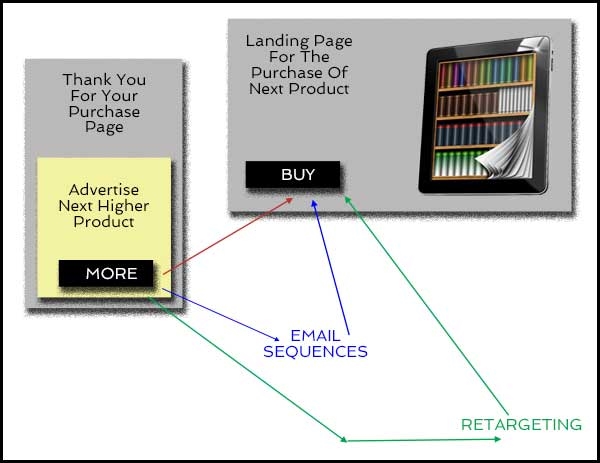
- You have “thank you page” after a product is sold, right? That is where you strike while the customer is already in a purchasing mood. Advertise the upsell or cross-sell product here, and make sure it’s just one step up the price ladder from what the customer originally bought. Clicking a link here should lead to the landing page for the new product you are pushing.
- If the customer readily buys the new product, great. But if he doesn’t bite, you will need to pursue him subtly. You do this by using email sequences and retargeting.
- Email sequences can slowly be sent to the recalcitrant customer reminding him of the new product and its benefits – and if you think he will bite, you can throw in a final sweetener discount to seal the deal.
- Along with emailing you can use “retargeting”. What is this? Google Display Network is a feature of Google advertising that allows you to put a silent unobtrusive cookie into the device of a person who browsed your product page. Google Display Network shows ads on millions of sites worldwide. Because of the cookie set in his device, your customer will see your ad around every corner where the Google Display network shows ads. Your ad will remind him to go back to your site and finish his buying.
Hopefully he will buy the new product from you as well … till the “thank you page” of that new product upsells or cross-sells yet another one of your products to him … and so on.
b. Enabling Co-Ownership Of The Brand To Customers In The Advocacy Stage
Once a customer has become a loyal repurchaser, he can be converted into your brand ambassador with very little persuasion. The psychology that works here, in the final ADVOCACY stage, is that he likes to show others that he has made intelligent purchases. So he becomes almost a co-owner with stakes in the brand you sell.
How can you take advantage of his eagerness to give your products a good name? There are three ways:
- Create an exclusive Buyers’ Facebook Group and make some of your biggest purchasers the moderators of the Group. They often like the opportunity to convince others in the Group to buy more. Besides, being members of a group of elite buyers always makes most buyers feel privileged.
- Encourage loyal buyers to become affiliate sellers of your product, with special commission rates much higher than your rates normally given to affiliates.
- Give your top buyers a chance to feature as your interviewees on your site – in blog posts, podcasts, webinars or Youtube videos. If you give them opportunities to shine in public, they will gladly vouch for your brand with all the power at their command.
The moral of the story is that buyers become advocates of your brand on their own – to defend their purchases. All it takes is for you to encourage them to bond into a community that is applauded publicly by you. They will reciprocate with vigor.
c. Tracking Customers Through The Funnel With CRM And Automation
One final question needs to be answered. How do you know how far a customer has progressed down the funnel, and what his next steps should be with your helpful and subtle nudges? Some people use elaborate Marketing Automation on their site, but that can be expensive. Some other marketers use a simpler Customer Relationship Management (CRM) Tool on their site to track progress of customer conversions from one stage to another.
It doesn’t matter which CRM tool you use but the process you follow has to be reliable. For each stage of the customer journey, see if you can designate a particular page on your site as the end-point of that stage. Let’s take an example …
- A TOFU customer who has been TRIGGERED and is CONSIDERING solutions to his pain-point may progress from being your blog reader into becoming your mailing list subscriber. You’ll no doubt have a “Thanks For Subscribing” page which signals the end-point of that stage of progress.
- A MOFU customer who has made a decision to CHOOSE and TRY your product may sign up for trial. Again the “Thanks for Taking The Trial” page becomes the end-point of that stage of progress down the funnel.
- A TOFU customer may BUY and EXPERIENCE the product. The “Thanks for Your Purchase” page can be the end-point of the BUY stage. If you’ve created a place where he can leave his queries during the EXPERIENCE Stage, you can answer those and then ask for feedback on his EXPERIENCE. Your “Thanks For Your Feedback” page could become another end-point.
- A LOYALTY Stage customer may get a “Thanks For Buying Again” page. Or if he refers another buyer or earns an affiliate commission, there may be an end-point page on your site that says “Congrats You’ve Earned”.
If your site is built to show people these end-point pages of each stage, your CRM tool can help track how many people hit the critical end-point pages on your site. If you know your site traffic stats you may then be able to say:
“About 75% of my visitors passed the subscription end-point page. Out of that, about 30% hit the product trial end-point stage. And about 10% of people who tried passed the PURCHASE end-point page. Of the buyers, 5% made repeat purchases above $ 300 dollars. And of those loyal buyers, 3% referred new members.”
This is how you check how well your funnel is performing. You have to have those end-point pages for every stage so you know people have passed that stage.
Think through your site and its structure to see that those clear pathways and end-point pages exist – that can then be assiduously tracked. Any good CRM tool will help you track, based on the key end-point pages you assign as critical markers.
In Summary …
- A sales funnel is a visualization of how a site get lots of traffic at the top end, which thins down to a small number of buyers at the bottom end.
- All customers follow buying journeys where they first seek solutions to pain-points, then evaluate alternative solutions and finally buy one solution that fits.
- Our sale funnel model looks at an 8-Stage buyer journey through the sales funnel.
- We have divided the 8-stages of the sales funnel into four main phases – TOFU, MOFU, BOFU and LOYALTY.
- Use the sales funnel idea to satisfy customer needs with decision-enabling content at each stage.
- To track customers’ progress through the funnel, structure your site to have clear pathways and end-point pages at each stage of the funnel.
So What Are Your Thoughts? Do Share!
This post is incomplete without your input. The community of Knowledge Commerce solopreneurs would feel galvanized to hear from you … so do share your thoughts on this topic with us, in the comments field below this post.
Business & Finance Articles on Business 2 Community
(50)

